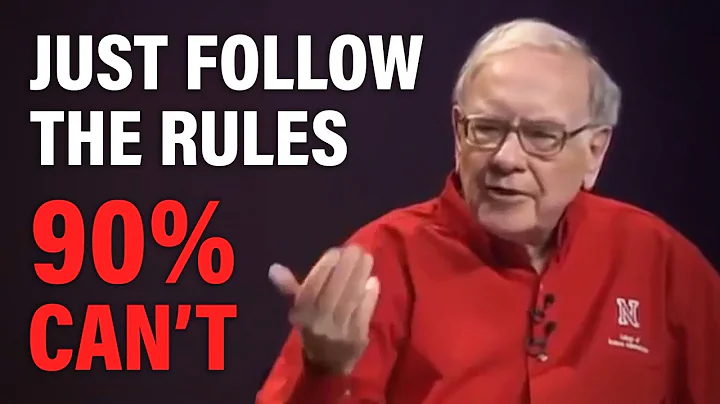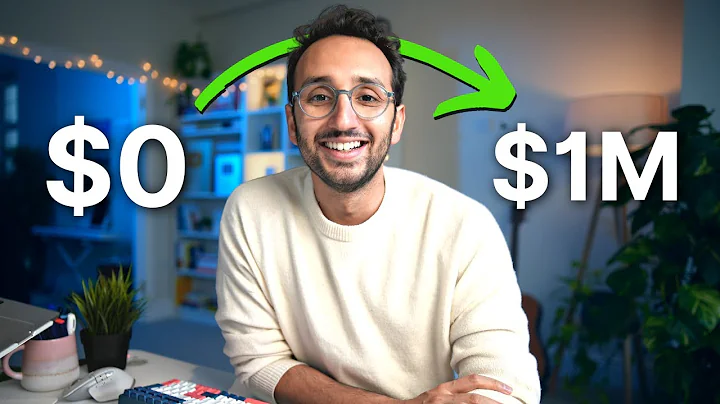cannot be used as investment advice. It is only for personal learning and sharing. Everyone is welcome to discuss and communicate together.

What is a fund
When talking about funds, we have to mention stocks. For the sake of ease of understanding, let’s equate funds with stocks for the time being, both of which are a form of investment.
If you want to buy Moutai stocks, you only need to find its stock code (600519) in the app and click to buy; if you want to buy a certain fund, it is based on a similar operation. Of course they are very different.
stocks are a completely personal behavior. You decide what to buy and when to buy/sell. Whether you make a profit or a loss depends entirely on the stock you choose.
If unfortunately you bought Kweichow Moutai at the peak of the last bull market at a sky-high price of 163 yuan, congratulations, the increase so far is about 12 times.

If unfortunately you choose LeTV , it will be a tragedy. It has been delisted and basically lost all your money.

The above two pictures basically illustrate the above point: the profit and loss of stocks completely depends on the individual.
But when we buy a fund, it is completely different. It is equivalent to us giving money to the fund company, and the fund company invests for us. What to buy and when to buy/sell are completely decided by them. We do not need to participate in any operations, we only need to passively enjoy the profits or bear the losses.
Are you thinking, "Am I right, the fund will still lose money?" Since you are losing money, why should you give your money to others to invest?
That's because compared with stocks, funds have two incomparable features: one is professionalism, and the other is risk diversification.
1. Professional . This is easy to understand. Fund managers are all professionals with considerable experience and professional knowledge in the industry. They are very professional. When many fund companies recruit, they require at least those with a Qingbei Fujiao degree, otherwise it will be difficult to get in.
Speaking of this, you can think about it, why do most small and medium-sized retail investors always lose money?
explained in one sentence, "How can you use your spare time to steal their jobs?"
People fighting in the stock market are generally divided into two types: non-professionals, commonly known as retail investors, and professionals. If retail investors without any training make money, it is money lost by professionals who study and study all day long. These people who study and study all day long end up losing money the more they study and study, while retail investors make money even though they don't study? Judging from our attempts, is it possible?
2. Spread the risk . After fund companies receive investors' money, they usually do not purchase a single target individually (there are exceptions, such as Bitcoin spot ETFs), but purchase a basket of targets. For example, the Shanghai and Shenzhen 300 Index fund is to purchase and cover 300 high-quality stocks in various industries in the Shanghai and Shenzhen stock markets with good operating conditions, large scale, and good liquidity.
This greatly reduces the risk. First of all, the selected stocks themselves are high-quality stocks, and the probability of plummeting is relatively low; secondly, the possibility of consistent thunderstorms among 300 stocks at the same time is extremely small. Even if a certain stock experiences a thunderstorm, This one falls by 10%, that one falls by 2%, maybe others rise by 1%, or 3%, and the 300 stocks are evenly divided. In comparison, the risk is much smaller.
Therefore, we often hear well-intentioned advice: Don’t invest in stocks, buy funds if you want to. What I mean is that the fund has less risk.
This sentence seems to be very correct and there is nothing wrong with it, but if you think about it carefully, it seems that it says nothing.
Buying a fund is like buying a car. The first thing we think about when buying a car is definitely which brand to choose, Volkswagen or Toyota , German car, Japanese car or American car.
Second, let’s consider which models these brands include, such as choosing Volkswagen, whether to buy poly, golf, or Passat .
Third, if you choose a Passat priced at around 200,000 yuan, how about the Magotan of the same brand and grade? What are the pros and cons of each? Or compare it with models of the same price range from different brands to see what their advantages and disadvantages are. After completing the above analysis, you can choose according to your own needs.
Therefore, we must have a sufficient understanding of its classification and characteristics.Let’s learn about the classification and characteristics of funds.
What are the categories of funds?
"Fund" is a general term. The fund we often refer to usually refers to the investment fund . Investment funds are divided according to different methods, and the common classifications are as follows:
1. According to the operation method, they are divided into closed-end funds and open-end funds .
closed-end funds have two main features. First, the number (shares) issued remains unchanged. 100 million shares means 100 million shares, and no additional issuances are allowed. Second, they cannot be redeemed within the specified period, but they can be traded on specified exchanges.
Open-end funds are just the opposite of closed-end funds. Fund shares are not fixed and can be redeemed at any time. If you are purchasing an open-end fund, when the market suddenly turns bad and you feel that it may deteriorate further and may continue to expand losses, you can choose to stop the loss in time and redeem it.
2. According to the investment objects, it can be divided into stock funds, bond funds, currency funds, mixed funds, etc. If more than 60% of the assets are invested in stocks, it is a stock fund; if more than 80% of the assets are invested in bonds, it is a bond fund. Money market funds invest solely in money market instruments. A mixed fund invests in stocks, bonds and money market instruments, but the proportion of stock investment and bond investment does not meet the regulations of stock funds and bond funds.
These fund categories, in descending order of return and risk, are: stock funds, hybrid funds, bond funds, and money market funds. Among them, stock funds have the highest risks and returns, and money market funds have the lowest risks and returns.
It can be seen that there is no risk in buying funds as we imagined. When the overall market is not good, if you choose stock funds, the losses may be much greater than that of money market funds.
3. According to the fundraising method, it is divided into public funds and private funds . The classification of
is mainly based on the source of funds. Public funds are raised openly to the public, and ordinary people can also participate. Private equity funds are raised in a non-public way and are mainly targeted at specific groups of people, commonly known as high-net-worth users. The threshold is relatively high, generally starting from 1 million yuan. What are the main differences between
? Strict supervision. Since a lot of money comes from ordinary people, public funds are very strictly regulated and have many restrictions. For example, holding a stock cannot exceed 10% of the total assets of the fund. The fear is that if the fund manager gets too excited and takes over a lot of positions, he will be in trouble. To black swan event , it is easy to lead to social group incidents.
private placement does not have so much supervision. Private placements are mostly targeted at high-net-worth users who have a high risk tolerance. For them, even if they return to zero, it may not have much impact. Therefore, private equity managers have a relatively large space to display, and at the same time, their operations are relatively aggressive, and they need to pursue higher profits. This may be closely related to their income and performance. Therefore, there was a phenomenon of public and private affairs.
However, this does not mean that private equity will definitely have higher returns than public funds. According to data, private equity performance is often better than public equity. That is because some of the poorer ones are pushed up by the average data. If you accidentally buy those poor students, you will fall into the pit. In addition, at least 300 fund companies have been blacklisted by the Fund Association, which means they have run away. If you buy these, you will basically lose everything.
4.According to investment style, active funds and passive funds.
Passive fund does not require too much manual operation and mainly tracks the index. The index funds we often refer to are passive funds. For example, the most influential CSI 300 Index Fund in China selects the CSI 300 Index as its investment target, and the fund's return rate is completely consistent with the rise and fall of the index.
Active fund , the fund manager takes the initiative and selects a stock portfolio, which more reflects the fund manager's personal ability.
5. In addition, there are the famous hedge fund , as well as wealth sovereign funds, etc. I won’t go into detail about these two categories, and those who are interested can learn about them themselves.
Let’s talk about ETF.
What is ETF
ETF, the abbreviation of Exchange Traded Fund, that is, " exchange-traded open-end index fund ", also known as " exchange-traded fund ". It has three characteristics:
1. It is a fund that tracks changes in the "underlying index". It can be seen from this that the passive funds mentioned in the above categories track the index. For example, the "GF SSE 500 ETF (510510)" issued by Guangfa Fund Management Co., Ltd. tracks the CSI 500 Index. . As shown below:
"ChinaAMC SSE 50 ETF (510050)" issued by China Asset Management Co., Ltd. tracks the SSE 50 Index . As shown below:
2. The trading method is the same as stocks. Buying and selling is very simple and convenient.
3. It has the characteristics of both open-end and closed-end funds. ETF shares can be bought and sold in the secondary market like closed-end funds, and they also have the advantage of open-end funds that can be freely subscribed and redeemed.
What should you pay attention to when purchasing funds?
When purchasing funds, you should avoid the following points to prevent pitfalls:
1. Avoid buying "green leaves". We often say that flowers should be set off by green leaves, but if you buy such "green leaves" when buying funds, you will fall into a trap.
A fund company often has multiple funds. As long as one fund can dominate the market, it can attract a large amount of funds. Therefore, fund companies are very willing to make a certain fund stronger and bigger, even at the expense of other funds, which often sacrifices and damages the interests of other investors.
For example, in order to strengthen a fund, a company assumes that Fund A first builds a position at a low position, and then uses funds from several other funds to do a large amount of long positions in Fund A. In this way, A's performance will be very good, while other funds will have higher costs. , low returns or even negative returns.
In this case, you need to analyze the funds under the company. If several funds hold most of the same stocks but have very different performance, then you should be cautious. Especially small-cap stocks , because it is easy to increase the price and easier to manipulate.
2. mouse warehouse . That is, before using the fund's funds to build a position, "you" build the position first, and then use the fund's money to raise the stock price. You can cash out at a high price, while the investors' money is held at a high price.
3. Buy a fund that colludes with listed companies. For example, stock god Xu Xiang’s manipulation technique is: first, build a position at a low price; second, the listed company releases good news, and Xu Xiang uses the good news to significantly increase the stock price; third, shareholders of the listed company reduce their holdings, and Xu Xiang Take over; fourth, divide the spoils according to the agreed proportion.
The three methods mentioned above are relatively common techniques. Of course, it is actually quite difficult for ordinary investors to see through these. The strongest has its own strong hand. You thought you were behind, but you didn't expect there was a shotgun behind you.
So as a general investment, is there any way to avoid falling into the pit? Yes, that means not buying active funds, but choosing passive index funds.
Of course, index funds also get stuck, so you should be responsible for your own investment behavior and do not rely on other people's advice as an investment basis.





















